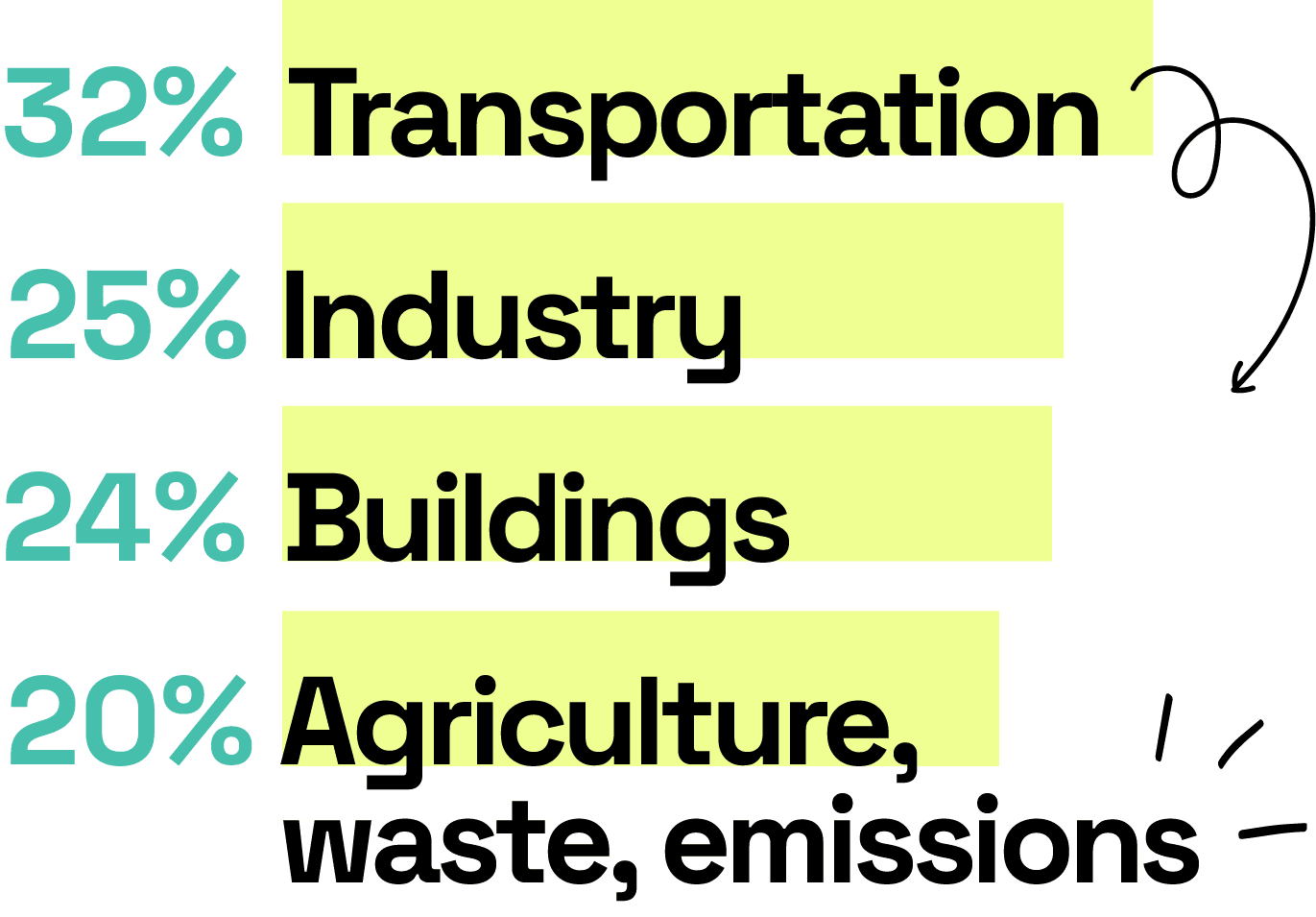To understand the importance of moving to a more climate-friendly and even climate-neutral society in the long term, it is first necessary to explain the impact of increased CO2 emissions:
Why the greenhouse effect, is not just bad
Our earth’s atmosphere consists of a colorful mixture of different substances, including greenhouse gases, which include CO2. When the light rays emitted by the sun hit the earth’s surface, part of them is reflected and sent back into space. The rest, converted into heat rays, is absorbed by the Earth’s atmosphere and stored by the greenhouse gases. Similar to the way heat accumulates under a glass dome. This process, described as the “greenhouse effect,” is not bad per se. On the contrary, thanks to the heat stored in this way, average temperatures of 15° degrees prevail on Earth, whereas without it there would be just -18° degrees to worry about. So as far as that goes, everything is fine. And also CO2 or carbon dioxide is nothing dangerous per se and even part of a natural process:
Spring, autumn and CO2
In spring, trees and plants absorb CO2 and use the greenhouse gas to bloom and flourish. In the fall, the leaves are then shed again, rotting and thus releasing the CO2 back into the earth’s atmosphere. So far so good. However, the process in spring can only process a limited amount of CO2, namely in something as much as would naturally occur in the air. But due to industrialization, more and more CO2 is being released into the earth’s atmosphere, leaving a significant surplus. And that means pretty much everything we do: from sending e-mails to air travel to boiling water, we are constantly producing CO2. The resulting surplus leads to more heat being stored and ultimately to global warming. This is because CO2 takes the longest of all greenhouse gases to decompose – around 100 years.
Effects that we are already feeling today
In the meantime, it is known what effects global warming can have and already has. Besides more intense natural disasters such as monsoon rains, hurricanes or drought, also chronic respiratory diseases for us humans. In addition, warming is triggering other domino effects: Polar ice caps are melting and releasing the CO2 stored in them into the atmosphere, while melt water is causing sea levels to rise – to name just one example. So there is an urgent need for action. Because the whole world is all too aware of the real danger, the so-called Paris Climate Agreement committed countries to reducing greenhouse gas emissions. Switzerland is among the 55 countries that have signed up to the climate agreement. One of the numerous cornerstones of the agreement includes the role of civil society and the private sector. Thus, all are called upon to intensify their efforts to promote climate protection and to support measures to reduce emissions.
Improvements of the future
Switzerland itself has set itself the goal of emitting no more greenhouse gas emissions by 2050. Of course, this does not mean that it will completely stop producing CO2 emissions, but these should be reduced and compensated for so that ultimately only as many remain as can be converted by nature. To this end, our country is implementing various measures, in the area of mobility, among others, the expansion of the charging infrastructure for electric cars, just as it set itself the goal of increasingly efficient vehicles coming onto the market. In addition, companies are increasingly encouraged to pursue a climate-friendly or even climate-neutral strategy. But what can you now contribute as a private individual?

A mission that concerns everyone
Even as a private individual, you can make a contribution to climate friendliness. Even small gestures such as energy-saving LED lights, boiling water with a lid or watching fewer videos can help. The latter is one of the main sources of CO2 emissions in the digital sector. Another important point is mobility: In Switzerland, traffic causes around one-third of emissions (see graphic on the left). Switching to cycling, public transport or an e-car is therefore also worthwhile for the environment. Sharing concepts, such as an e-car for the entire shared apartment, can also make sense.
How much emissions an e-car actually saves depends, of course, on your current vehicle and your driving behavior. You can make a direct comparison online with the UPTO e-mobility calculator, which directly shows you cost and emission savings. However you make your contribution to saving our world, one thing is certain: even a single person can make a big difference.

